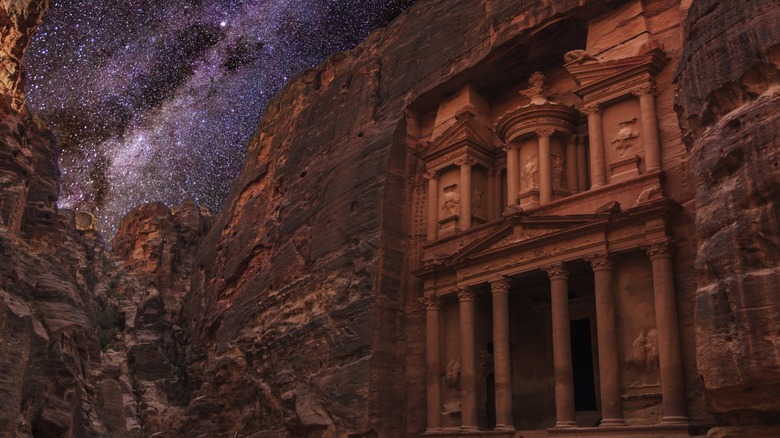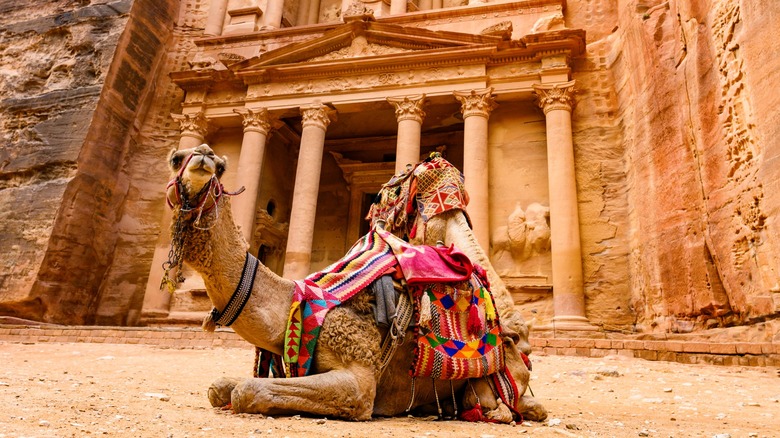On a mission to find the source of the Niger River, Swiss explorer Johann Ludwig Burckhardt found himself in Jordan and, after following his local guide, stumbled upon the ruins of the ancient city of Petra. While already well-known to locals, his “discovery” brought the city to the attention of the Western world in 1812. Since then, this magical place has become one of the world’s most visited archeological sites. Its fame now rivals that of the Acropolis of Athens and Rome’s iconic Colosseum (which is free to visit one day a month). Even if you’ve never stepped foot in the country, you have likely seen this architectural marvel — perhaps in the travel photos of friends and family lucky enough to visit in person or in films, including the 1989 blockbuster smash, “Indiana Jones and the Last Crusade.”
Petra, which lies hidden beneath deep desert canyons in southern Jordan, is a sight to behold. As one of the New Seven Wonders of the World and a UNESCO World Heritage Site, Petra stands as a testament to the architectural prowess of the Nabatean kingdom, a civilization of nomadic Arabs that flourished from around 400 B.C. until A.D. 106. Also called the Rose City for the soft pink hue of the surrounding sandstone, Petra was established as the Nabatean capital due to its proximity to various regional trade routes.
And while there are numerous impressive monuments to see in Petra, the most spectacular of them all is at this city’s entranceway. Here, you’ll find the Greek-style exterior of what appears to be a temple, standing at over an imposing 130 feet high. Known as the Treasury, or Al Khazneh in Arabic, this spectacular ruin is Petra’s most photographed structure and is often a symbol of the city itself.
The history of Petra’s Treasury
Names can be misleading, and so too is Al Khazneh. The Treasury is not, as its name would suggest, a place where ancient finances were managed — it is a mausoleum and crypt, originally built for a great Nabatean king. Construction on it likely began at the start of the first century for King Aretas IV Philopatris. It was hand-carved into the soft stone, like the many temples and monasteries that populate this canyon city. Due to Petra’s central location along important trading routes (and the Nabateans’ nomadic nature), the Treasury showcases a blending of architectural styles from all over the ancient world, including Hellenistic traditions. The magnificent façade features six ornate Corinthian columns, and there are reliefs of the Greek goddess Nike and the Egyptian goddess Isis adorning the structure.
So why is it called the Treasury? According to Bedouin lore, the stone urn that sits at the top of the structure’s façade supposedly held the fortune of an Egyptian pharaoh. In reality, though, it was purely decorative and didn’t contain any treasures inside, but that didn’t stop believers of the legend from attempting to steal it all the same. Today, if you visit Petra, you’ll observe that the urn is riddled with bullet holes from these failed attempts.
Besides the Treasury, there are over 800 registered sites for you to see in Petra, which covers an expansive 100 square miles. Along with a good pair of walking shoes, you’ll need ample time to explore the area — many tourists even spread out visits over two or three days. Planning in advance which sites you’d like to view is helpful for maximizing your time here.




